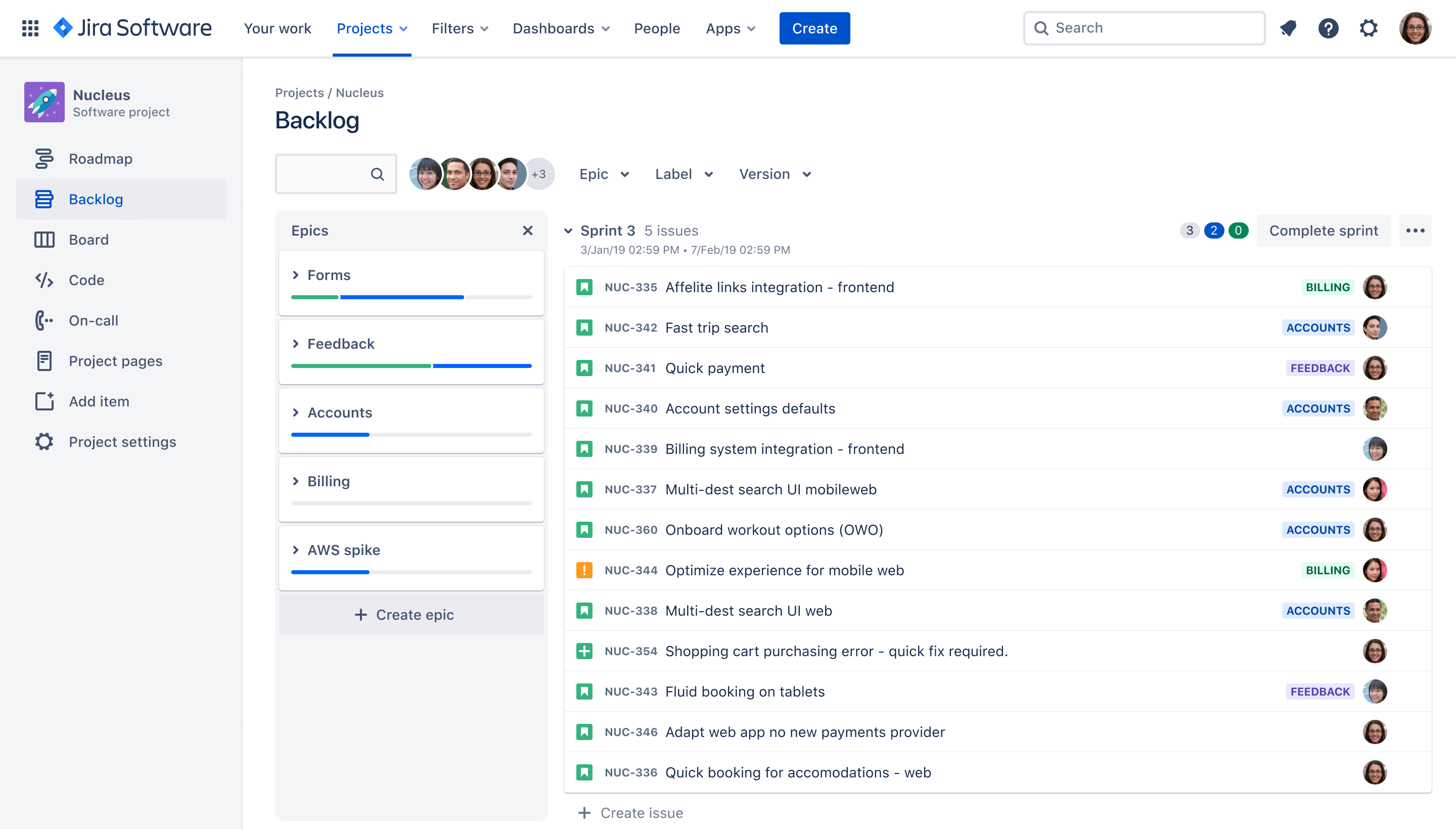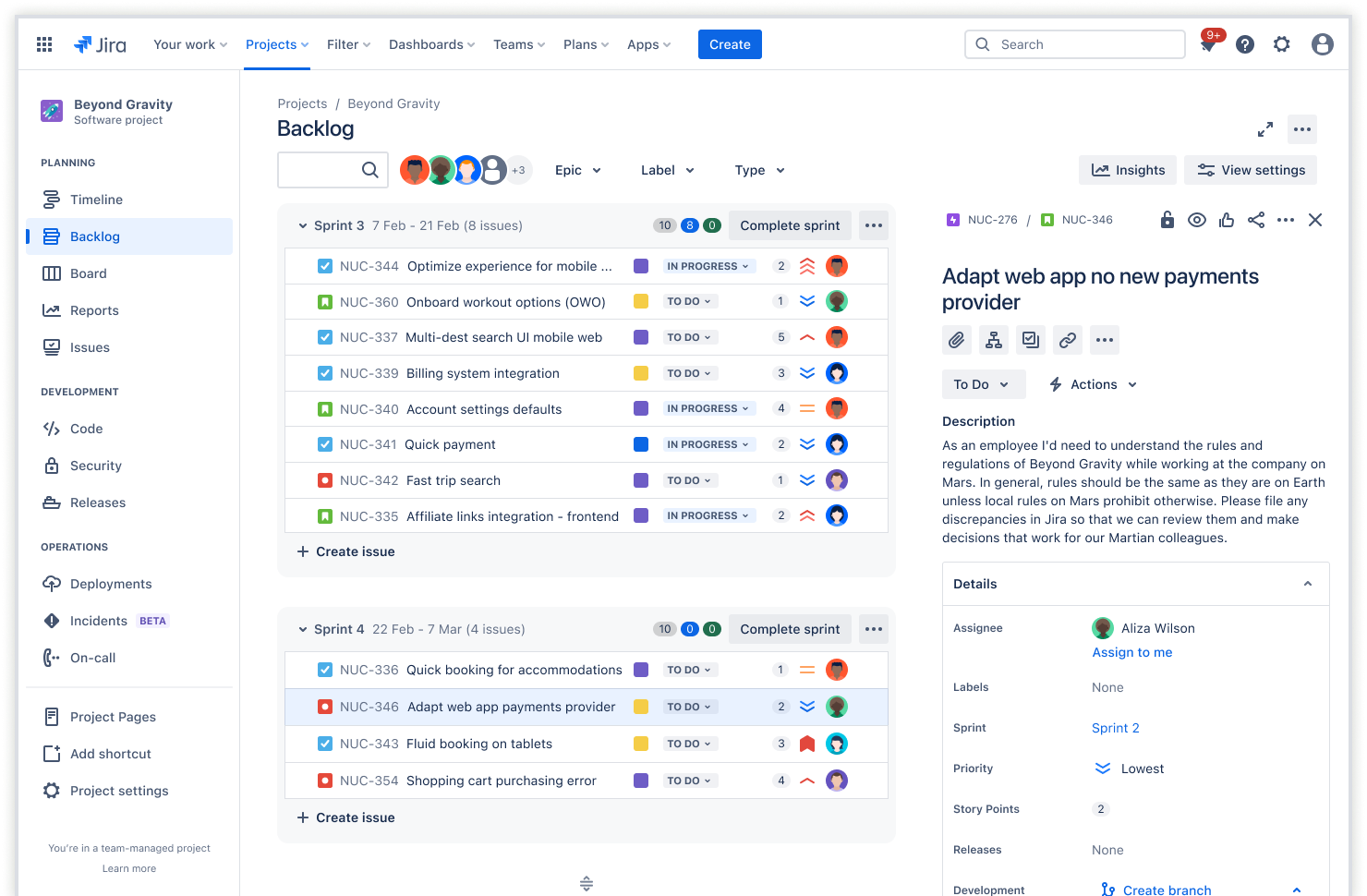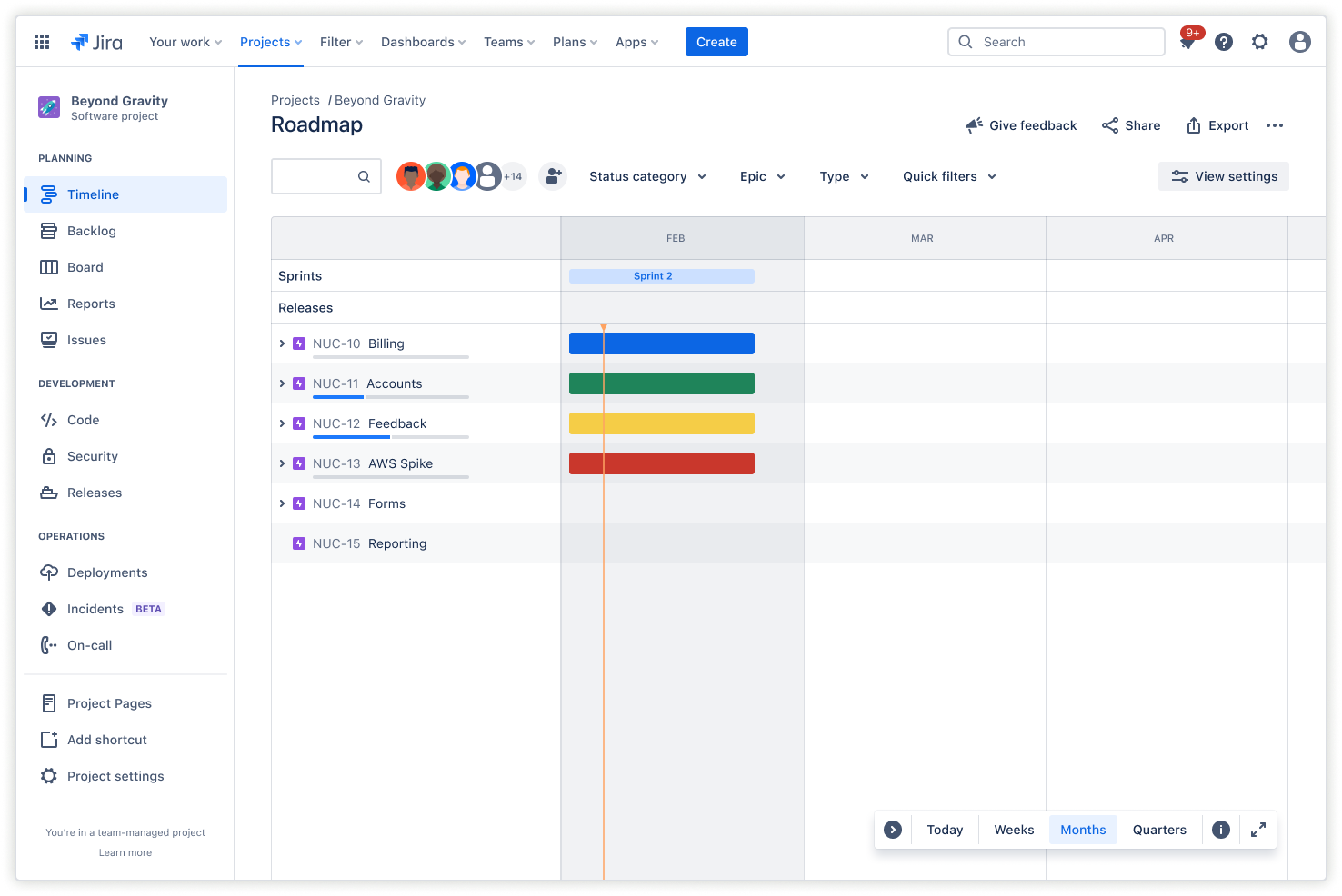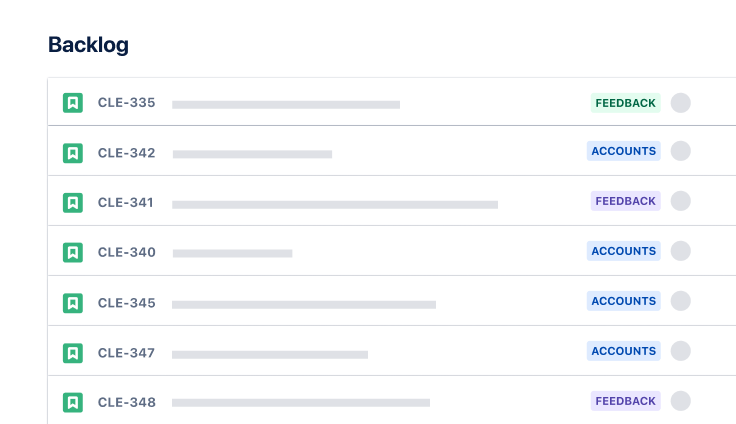
Scrum backlog template
The Scrum backlog template helps Agile teams organize and prioritize tasks, improving time estimates and enhancing understanding of dependencies and blockers.
best for
Project management
Software development
key features
Task planning
Prioritization
Pipeline management
What is a scrum backlog template?
Improved organization
The scrum backlog template in Jira Software provides agile teams with a systematic and reusable approach for organizing the overall project and the focused work in each sprint. It helps capture all necessary features and supporting information, such as user stories and requirements, in a consistent, structured, and centralized manner.
Prioritized list of tasks
Prioritizing and estimating tasks is simple with the Scrum backlog template. Agile teams can quickly move high-priority tasks to the top, identify dependencies, and spot potential roadblocks. Reprioritization is simple, and dependencies automatically move to provide a clear picture of the work.
What does the scrum backlog template include?
Product backlog
The scrum product backlog template includes all the work for a project, including product backlogs and sprints. Projects often have multiple product backlogs for different focus areas, such as new features, user experience, or product optimization. Teams identify and prioritize tasks within each product backlog. The work begins once they incorporate them into Scrum sprints.
Teams can include relevant information, such as specifications, user stories, and value. Prioritize items on the product backlogs based on business value and project goals. This allows teams to achieve greater efficiency when creating the sprint backlog, also known as an iteration.

Sprint backlog
Sprints are focused sets of tasks that deliver an incremental result. Many teams also identify sprints with milestones. The scrum sprint backlog template includes sprint planning.
The sprint backlog is a subset of the product backlog and consists of tasks teams are working on or plan to work on soon. By breaking down the sprint into smaller tasks, teams can complete the sprint faster and identify potential blockers.

Timeline view
A timeline view helps teams and stakeholders stay informed of the progress on upcoming deadlines and related tasks. Adding epics and mapping work items provides a clear understanding of dependencies and how the tasks fit together. A centralized, interactive view makes it easier to see conflicts, duplicate tasks, resource constraints, and other potential roadblocks.

Scrum boards
Scrum boards transform tasks into manageable visual representations of the entire project. A visual presentation helps Agile teams recognize large, complex depictions of work and break them down into smaller, more manageable tasks. This helps eliminate surprises, keeps the team focused on the sprint, and ultimately ship faster.

